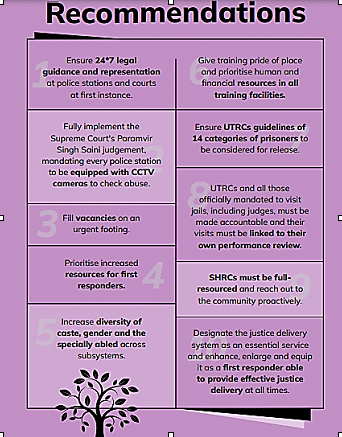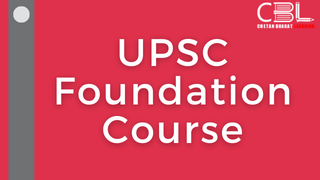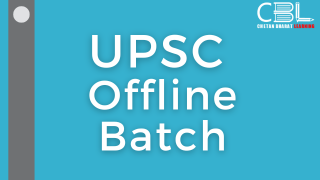Important for
Prelims: Indian Polity
Mains: General Studies Paper II
India Justice Report (IJR) 2022
- Initiated by Tata Trusts in 2019, The foundation’s partners include the Centre for Social Justice, Common Cause, Commonwealth Human Rights Initiative, DAKSH, TISS-Prayas, Vidhi Centre for Legal Policy and How India Lives, IJR’s data partner.
- This report is based on overall data of 4 pillars of justice delivery
- Police,
- Judiciary,
- Prisons, and
- Legal Aid.
- The 3rd edition also assesses the capacity of the 25 State Human Rights Commissions in the country separately.
Key Highlights
- large and medium-sized states having a population of over 1 crore each (18) :
- Karnataka ranked first
- Tamil Nadu,
- Telangana,
- Gujarat, and
- Andhra Pradesh.
- Meanwhile, the Uttar Pradesh is at the lowest rank (18th).
- Small States with a population less than 1 crore :
- Sikkim topper
- Goa is at the lowest rank (7th)
State Human Rights Commission :
- 33312 cases pending before 25 SHRC in March 2021.
- 44% National Average vacancy across 25 SHRC.
- Shortage of Judges:
- Severe shortage of judges and infrastructure, leading to rising pendency, increasing caseloads, and declining case clearance rates (CCR) in lower courts.
Pendency:
- Per judge is rising in most states over the last five years, while the sanctioned strength has remained the same.
- The average pendency in High Courts is highest in Uttar Pradesh (11.34 years) and West Bengal (9.9 years), while it is lowest in Tripura (1 year), Sikkim (1.9 years), and Meghalaya (2.1 years).
- Although states have increased budget allocation for legal aid, legal aid clinics reduced by 44 per cent Except for two union territories, Delhi and Chandigarh, no state spends more than 1 per cent of its total annual expenditure on the judiciary.
- Most states have not fully utilised the funds given to them by the Centre and “their own increase in spending on the police, prisons, and judiciary has not kept pace with the overall increase in state expenditure.”
- Concerning budgets, the report states the national per capita spend on legal aid, including the expenditure of the National Legal Services Authority (NALSA) and the state/UT governments themselves, is a “meagre Rs 4.57 per annum”
- The report flags the issue of “vacancy” in areas like the police, prison staff, judiciary, and legal aid.
- between 2019 to 2021.

Recommendations:
- The government needs to address this issue of shortage of judges by filling the vacant judge posts, providing adequate infrastructure, and taking measures to improve the efficiency of the judicial system.
- Better police training and infrastructure, reducing overcrowding in prisons, and improving the speed and efficiency of the judicial system.
- Greater attention to be paid to the needs of victims of crime, including improving access to legal aid and victim compensation schemes.
- By addressing these challenges, India can move closer to achieving a more equitable and effective criminal justice system.
Practice Questions for Prelims
Consider the following statements regarding India Justice Report (IJR) 2022,
1. it was initiated by Tata Trusts in 2019,
2. This report is based on overall data of 4 pillars of justice delivery Police, Judiciary, Prisons,
and Legal Aid.
3. In the category of large and medium-sized states (having a population of over 1 crore each)
Karnataka ranked first meanwhile, the Uttar Pradesh is at the lowest rank.
Which of statements given above is / are correct :
a) 1 and 2 only
b) 2 and 3 only
c) 1 and 3 only
d) All of the above
Ans. d)




Leave a Reply
You must be logged in to post a comment.